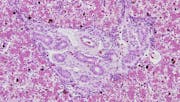
"When I was a kid I spent my pocket money on formaldehyde and glass eyes. The formaldehyde was to pickle organs. The glass eyes meant that the animals I stuffed could follow me round the room with their dead gaze."
A Window to the Wild – Getting Philosophical about Taxidermy
af Charles Foster
Kan man tage den vilde natur med hjem? Udstyret med formaldehyd og glasøjne gik den unge Charles Foster på opdagelse i de døde dyrs rige og fandt et vindue til vildnisset. I dette eksklusive essay ser naturbogsforfatteren Foster tilbage til en barndom med udstoppede dyr.
When I was a kid I spent my pocket money on formaldehyde and glass eyes. The formaldehyde was to pickle organs. The glass eyes meant that the animals I stuffed could follow me round the room with their dead gaze.
I wasn’t a very good taxidermist. My animals smelt bad, and my parents banished them and me to a shed at the bottom of the garden. Few of my animals survived the moths of the unforgiving decades. The ones that did are horribly, unanatomically stiff and twisted. My wife won’t have them in sight. If I want to visit them I have to climb up to the attic. My children laugh and say that I must have been really weird, lonely, and friendless, and that they certainly would never have played with me.
I was particularly proud of three pieces. One was a grey squirrel. My dad picked it up on the road, and it’s standing on a log in a case I made myself, looking rueful. The second was a goldcrest, smitten by the snow. I injected it to preserve it and suspended it, wings outspread, above my bed. It circled in the wind of my breath. It was the first and last thing I saw each day. And then there was a carrion crow. I found it crumpled on a farm. It had probably been shot on suspicion of pecking out the eyes of lambs. I mounted it with its wings outspread too. It’s launching itself out of a piece of pine, which I stained dark brown to give the crow dignity.
Why didn’t I watch TV instead?
I can identify several reasons – and there are no doubt many others, more important, but buried invisibly in my subconscious.
The first, and least important, was the universal childhood obsession with seeing how things worked. Cutting things up and stitching them back together was just a sort of zoological Lego. I wanted to know what things were, and I laboured then, as I laboured for years afterwards, under the reductionist delusion that if I pulled things apart I would understand them. Of course precisely the opposite is true. Things are not the sum of their parts, and by taking things to pieces we simply lose sight of the whole. I was an innocent inheritor of Enlightenment nothing-buttery – the pervasive and toxic idea that things are nothing but their components, and that the smaller we chop, the more we comprehend.
The second, and far away the most significant, was that I wanted to bring the wild into my bedroom. Or, rather, I saw my bedroom already as part of the wild, and wanted it to look the part.
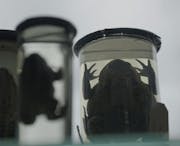
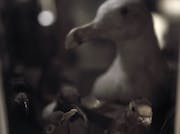
We lived right on the edge of a big industrial city in the north of England. At the top of our road the neon streetlights gave up, and beyond that there were ghosts and screams and dead Roman soldiers and things with sharp teeth. It was all a lot more interesting than the tennis club and the church at the bottom of the hill. I decided to breathe only the air from the wild. I only opened the window at the wild end of the room. A wild place needs wild animals, and since I wasn’t allowed to share a room with live foxes, I had to make do with sharing a room with dead ones.
The fact that my animals didn’t look alive didn’t bother me at all. Their nationality was clear: they were from the wilderness, not the tennis club, and if they were prepared to share a room with me, that meant that I acquired wild citizenship by association. In fact their emphatic dead-ness helped, because, I saw, death was a big part of being wild. Really wild things killed and were killed. There was no death or killing at the tennis club.
I saw those animals, as I tend to see all things now, as repositories of all their experiences. I wasn’t just hanging a crow on the wall: I was hanging all the things that had happened to it. I was getting the view of a mountain from the top of a swinging elm; I was getting the sensation of a beak stabbing a grass snake; I was getting five Derbyshire summers, and all the wisdom encoded in them. Taxidermy represented excellent value for money.
But though I felt a crucial solidarity with these animals, I also felt a crucial difference. That’s where the third reason lay. I didn’t have black wings or grey fur. I couldn’t fly or run up a tree. Nor, unlike the birds or the squirrel, had I crossed the dark river to the land of fox-prey, dead grandparents, and the corned beef we had on Wednesdays. The smell wafting down from that incompetently preserved carrion crow was not the smell of decomposition but the smell, which has intoxicated me ever since, of otherness.

Wildness, then, was both me and not-me. This generated a tension in the sinew of my mind which has given it whatever tone my mind has.
It’s been unkindly suggested to me that I wanted to stuff things because I had a God-complex, and wanted to create animals as God did, and wanted to make the dead live again, as He did. So far as I know my own mind, this is a libel. I had no Messianic delusions. I knew perfectly well that I couldn’t create. I couldn’t even imitate the pose of a natural squirrel, though I tried very hard, and read all the right books, and spent my school holidays with the museum taxidermist and with a man who lived on the moor and had a freezer full of buzzards. If you want a theological angle on your psychoanalysis of that strange child from Sheffield, it would be far more plausible to suggest that I did crap taxidermy because it reminded me unavoidably that I wasn’t God. Looking back, though, there probably was something talismanic about my obsession - though I never recognised it then. Since these creatures had died, and since I owned them, I had some sort of control over death itself.
That’s quite enough about me and my stuffing.
Why do other people like dead animals in their homes? For they do. Taxidermy is enjoying a colossal renaissance. It’s big business. It has huge international festivals and competitions. You can buy the prefabricated artificial body of a badger in several different sizes and get it delivered overnight by DHL. There’s cut-throat competition in the lynx-eye and cougar-tongue markets.
Some of it – a lot of it – is just evil: think of the gun-toting tax lawyer who hopes that if his visitors admire a lion’s head over his billiard table they won’t notice that he has a ludicrously small penis.
But some of it isn’t. Some of it, however besoiled by macho chest-beating, is what that little boy in Yorkshire was after: a relationship with wilderness. The tax lawyer, or some vestige of his atrophied soul, knows that he’s a wild thing (however sharp his suits), and that his billiard room is a wild place. This is easy to mock, and lots of it should be mocked, but there’s a redemptive truth there somewhere. The lion might just save the bastard who killed it.
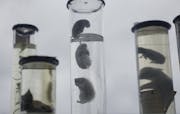
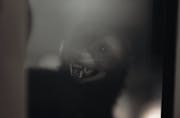
I notice, now that I think about it, that stuffed foxes and the like generally snarl. That’s interesting. Perhaps part of it is the he-man complex: killing a snarling thing is evidence of a high testosterone level as killing a smiling thing is not. But, being charitable, perhaps the lawyer is recognising that there is something honest and foundational and, yes, human, about actual snarling, involving real teeth, which his metaphorical snarling in an affidavit or a cross-examination does not have. Perhaps he’s acknowledging that the forces which made us the shape we are, and can help to remould us to the shape we should be, are non-human forces.
I always carried plastic bags in my pocket so that I could bring the road-kill home. I’ve got out of the habit, but it was a good one. It meant that I expected the natural world to give, to surprise, and to change me. The plastic bag was a token of the bounteousness and iconoclasm of nature.
It’s a classic mark of insanity, of course, that the insane person thinks that the rest of the world is mad. But being perfectly objective, it seems to me that you’re only a normal, thriving human child if you spend your pocket money on glass eyes and formaldehyde, and only a normal, thriving human adult if, as I do, you eat all your meals in an improvised veterinary mortuary, looking at a dead herring gull, a whole holt of otters, and a whole host of jumbled body parts.
I have been right about very few things, but I was right not to watch TV. TV depraves and corrupts. Taxidermy is its sworn enemy.



